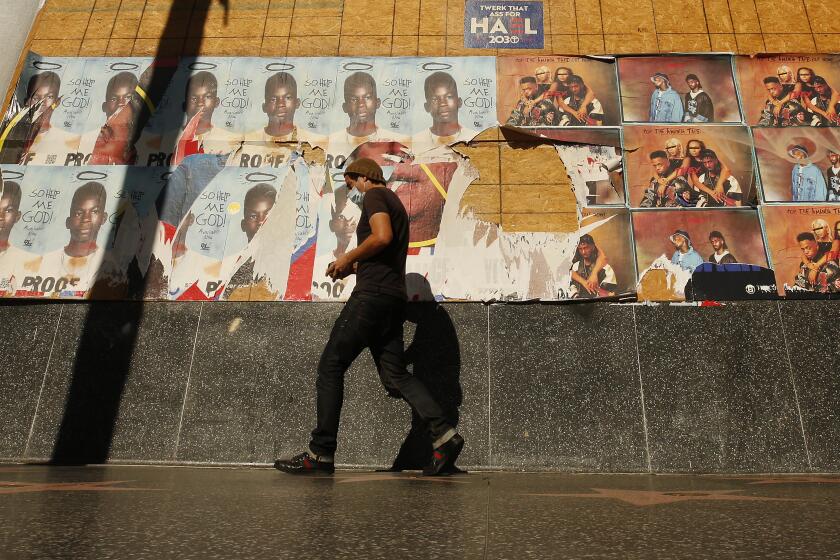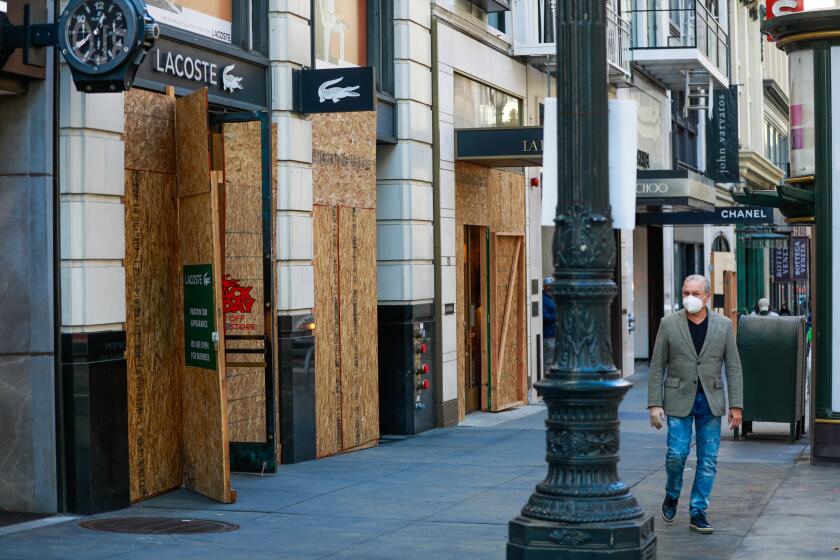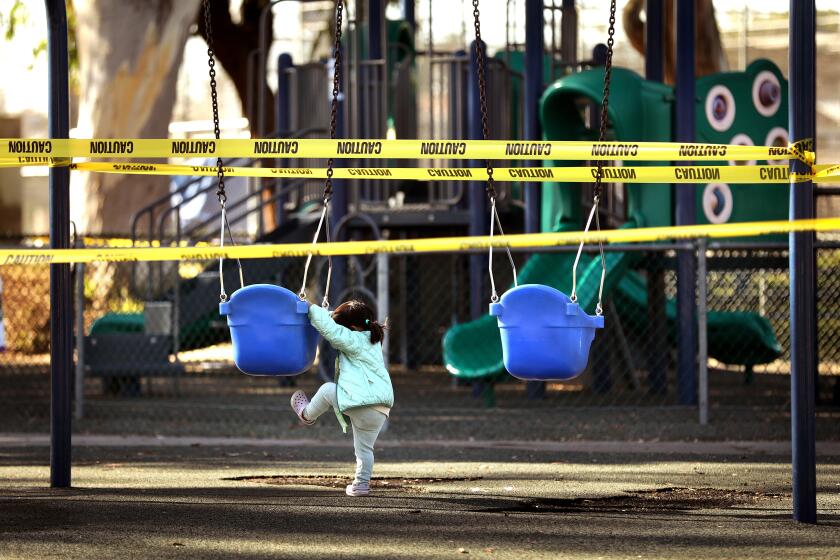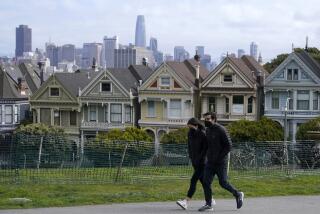Bay Area counties will begin stay-at-home order on Sunday, ahead of state mandate

- Share via
SAN FRANCISCO — Five Bay Area counties on Friday announced that they would impose a stay-at-home order as early as Sunday night, saying hospitals are so overcrowded that “the time to act is now,” rather than waiting for the region to pass the state’s threshold for such an order.
It would be too late to act if the Bay Area waits until its intensive care units have only 15% capacity, which is California’s criterion for implementing a stay-at-home order, officials said.
If ICU bed capacity stays below 15%, a regional stay-at-home order would kick in, shutting outdoor restaurant dining, hair salons, nail salons, playgrounds, cardrooms, museums, zoos, aquariums and wineries and restricting retail capacity to 20%.
The order will go into effect in San Francisco, Santa Clara and Contra Costa counties on Sunday; in Alameda County on Monday; and in Marin County on Tuesday. The four other Bay Area counties — San Mateo, Sonoma, Napa and Solano — are not part of the joint action.
The city of Berkeley, which has an independent public health department separate from that of Alameda County, will join the order.
“Waiting until only 15% of a region’s ICU beds are available is just too late,” said Dr. Tomás Aragon, health officer for San Francisco. “Many heavily impacted parts of our region already have less than 15% of ICU beds available, and the time to act is now.”
“We cannot wait until after we have driven off the cliff to pull the emergency brake,” said Dr. Sara Cody, Santa Clara County’s health officer. “We understand the closures ... will have a profound impact on our local businesses. However, if we act quickly, we can both save lives and reduce the amount of time these restrictions have to stay in place, allowing businesses and activities to reopen sooner.”
San Francisco could run out of ICU beds by Dec. 26, and Santa Clara County could run out within a week, said Dr. Grant Colfax, the director of health for San Francisco, in a briefing.
“We are in our worst surge yet of COVID-19,” he said. “It is stressing healthcare systems across the state of California and taxing our healthcare workers.”
He said immediate “urgent intervention” was required to ensure that hospital rooms remain available in mid- to late December.
None of the five designated regions in California have reached the critical under-15% ICU capacity, but all are expected to hit that mark soon.
“We do not want your parent, your spouse, your child, your grandparent or any loved one to be in need of help and our hospitals too overwhelmed to properly care for them,” Colfax said.
Here’s what closes under the order:
- Outdoor restaurant dining
- Hair salons, barbershops, nail salons and other personal-care services
- Playgrounds
- Outdoor card rooms and satellite wagering and casinos
- Outdoor museums, zoos and aquariums
- Outdoor movie theaters
- Outdoor wineries
- Campgrounds for overnight stays
- Food, drink or alcohol sales at outdoor recreational facilities
California Gov. Gavin Newsom is facing criticism over closing playgrounds as part of his new stay-at-home order
Retail will stay open at a further reduced capacity.
All retail can remain open under this order, although at a reduced capacity.
- Most of the Bay Area: According to state rules that apply unless superseded by tougher local rules, essential retail, like supermarkets and drugstores, will stay open at 20% capacity. They previously were allowed to stay open at 50% capacity. Nonessential retail, like other stores and malls (which were open at 25% capacity), also can be open at 20% capacity.
- Santa Clara County: The local, tougher limit for nonessential retail (10%) will be loosened to 20% to conform to the state’s framework. Essential retail capacity will be cut from 25% to 20%.
Travel and use of hotels and lodging for tourism and leisure is prohibited.
This new phase in the pandemic means new rules for hotels and other travel providers.
The new regional stay-at-home order again prohibits hotel use for tourism, leisure and other nonessential reasons.
Specifically, it allows use of hotels and lodging for essential reasons only, defined as supporting “critical infrastructure sectors,” including workers in healthcare, food, agriculture, energy, utilities, transportation, communications, government operations, manufacturing, financial services and the entertainment industry.
The order prohibits nonessential travel.
What stays open:
- Entertainment production
- Professional sporting events without live audiences (an exception is made in Santa Clara County, which has its own order banning contact sports, forcing the San Francisco 49ers to temporarily relocate to Arizona for December home games.)
- Schools that are already open for in-person learning
- Outdoor areas like beaches, parks and hiking trails
- Medical and dental offices
- Child care and pre-kindergarten
- Restaurants for takeout and delivery service
- Critical infrastructure sectors
More to Read
Sign up for Essential California
The most important California stories and recommendations in your inbox every morning.
You may occasionally receive promotional content from the Los Angeles Times.



















